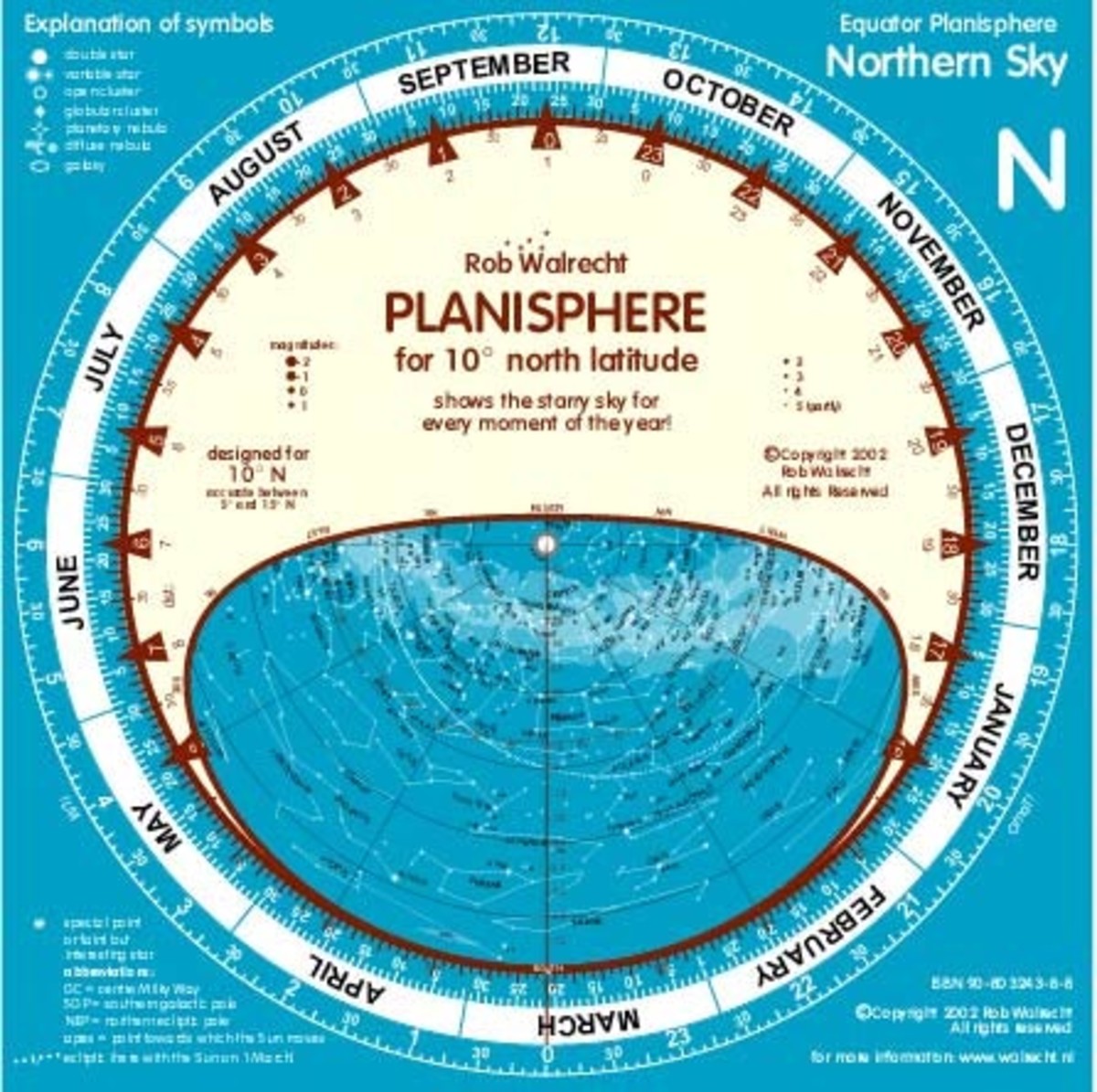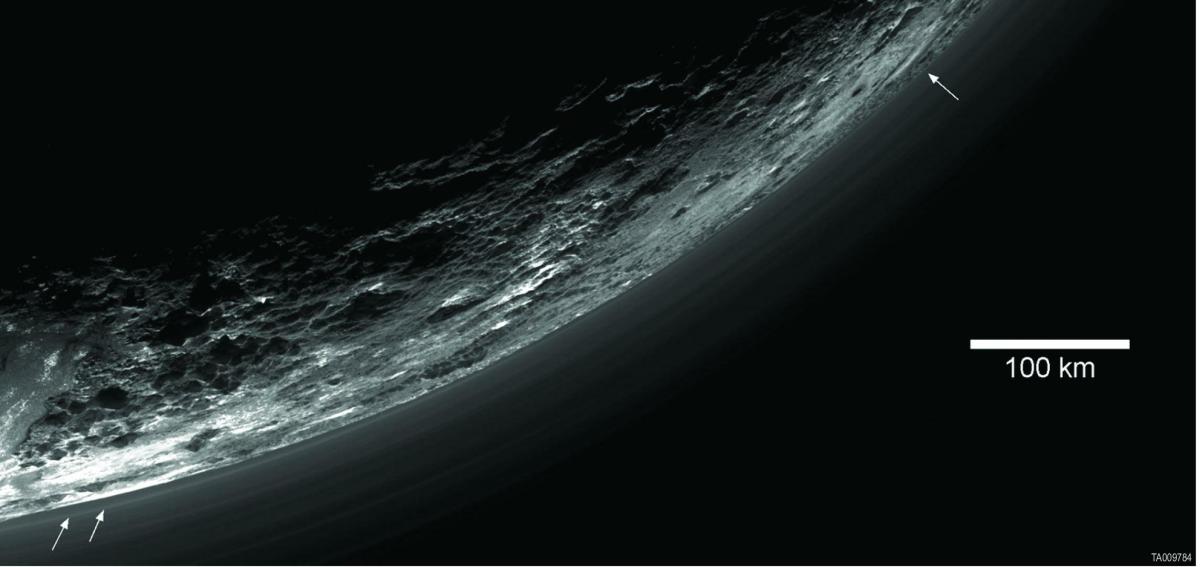The Sky
Views from the Sky
One of the key techniques scientists use to solve things is to look at problems from multiple angles. You must be able to imagine seeing earth from the moon's surface, or from the sun's position, or from your own back yard and then be able to transition the point of view and translate the details.
You may have heard that all the objects in the solar system move in the same plane. This is pretty close to accurate, with two notable relavent exceptions: the moon's orbit around the earth, pluto's orbit around the sun, and comets. So if you drew the sun in the center of a piece of paper and a bunch of circles representing the orbits of the planets, that paper would represent the plane I am refering to. Tilting the paper to view it from the edge would be like looking at the sun from one of the planets. See images 1a and 1b.
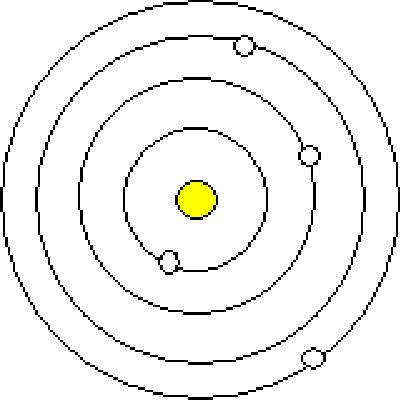

Views of the Sky
When you're on your back porch looking at the sky, you may learn to pick out some notable objects in the sky - objects such as the sun, the moon, and the planets. These objects are almost in the same plane (the moon will be slightly off from the planets and the sun). When you view this plane from your back porch, it might be difficult to recognize for the following few reasons: mankind still has lingering logic that the earth is flat, you must keep in mind that you live on a curved surface and that if you move closer or farther away from the equator the sky will look different, and that the earth is tilted. That's a bit confusing so let me explain. On December 21, the days in the northern hemisphere are shorter than they are in the southern hemisphere. This is because the earth is tilted and the southern hemisphere is exposed to the sun's light for longer than in the northern hemisphere. Thus when you're in Barrow, Alaska and can't see the sun at all, that's because the earth is between you and the sun at all times - you are in the earth's shadow 24 hours a day. Now this difference will become less pronounced the closer you get to the equator because the earth is curved - instead of days swinging from 24 hours of dark in the winter to 24 hours of day in the summer, you will see maybe a swing from 14 to 10 hours of light per day across the seasons.
When you first look at the sky, you must have a bit of an opened mind. I usually face south. The eastern horizon will be on my left and the western horizon will be on my right. I then tilt my head up and look at the sky. All the objects in the solar system (with the notable exceptions of the moon and pluto) will form a straight line. See image 2a. You may also notice that if you're facing perfectly south, the straight line will be tilted slightly - it will not point directly east and west unless you're at a perfect time of the day. This can still be seen in image 2a. Because the earth rotates and the plane we're looking at is tilted, the objects therein will sweep out a belt in the sky. All objects in the solar system remain in this belt in the sky - you will never see a planet next to north star, nor will you ever see the moon near the north star.
When you hear scientists saying the planets are lining up - that is not the same line I am talking about. The planets are always in the line I'm talking about. When scientists say the planets are "lining up", they are talking about the planets forming a straight line to earth - easiest to picture as if looking at that piece of paper (trace a line from Jupiter to Mars and that line will intersect earth). From your back porch, it will look like one planet is running over another planet - two dots in the sky temporarily form one or get really close together. See image 2b.
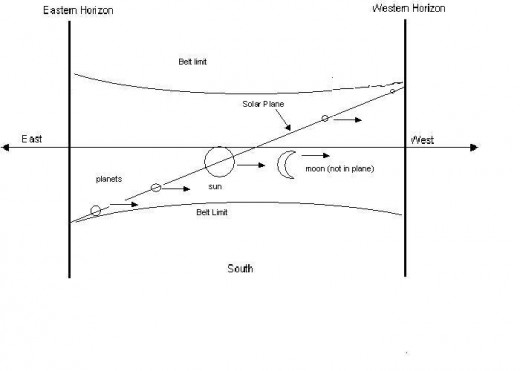
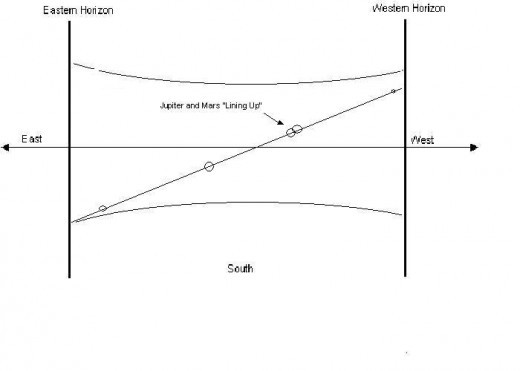
Read More on the Motions of the Moon and Planets
- How Space Objects Appear to Move Vs Actual Movement
Objects move differently than they appear. Read on to see how. - Do You Want to see the Sun Rise and Set in the North?
Unlock the mysteries of a sunset in the north - and 24 hours of daylight! - Why Does the Solar Plane Sweep a Belt out of the Sky?
The image below shows a hyperbolic representation of the belt in the sky. Because the earth is tilted relative to the plane and is also rotating, the plane sweeps a belt across the sky. None of the planets or...

